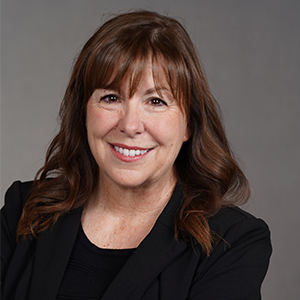HousingWire Editor in Chief Sarah Wheeler sat down with Rick Arvielo, co-founder and CEO of New American Funding (NAF), to talk about AI, why he chose to start NAF Technology India and how to keep NAF innovative. This interview has been edited for length and clarity.
Sarah Wheeler: New American Funding is known for building rather than buying technology. Are you still in that mode?
Rick Arvielo: Yes, and as a matter of fact, we’ve really doubled down on the effort. I’ve always kind of led the charge in our tech build, and as we’ve gotten bigger, it’s just harder for me to devote the time to immerse myself in that. So within that last couple of years, we brought in some great leaders — we’ve been lucky to attract some top talent to New American Funding,
Another fairly material decision we made was about a year and a half ago, we made the decision to rely on some offshore assistance. But having some experience with that, I didn’t really want to find contract offshore providers. So we decided to open our own company in India: NAF Tech India. We have about 150 New American Funding employees over there now to help supplement our somewhat lofty tech build goal.
SW: What has that experience been like?
RA: It’s great! We’ve been using contractors here and there for some time just because it’s often a lower cost, but what we find is with contractors, oftentimes, they’ll give you their “A” players to get you into contract and then they move those people on to their next target. Then you’re left with people that don’t measure up to the initial bar. So, we just realized that the only way that we were going to control that world is to own it ourselves — and it’s quite an undertaking.
You’ve got to incorporate over there, you’ve got to get space and build it out, you’ve got to find the leadership and then start hiring staff. That took about a year, but we’ve been full force now for about a year.
The challenge with the U.S. really has a lot to do with the escalating pay scales [for tech workers] which is very hard to digest in a market like we’re in right now. It will have you second guessing your decision to build versus buy! But also, when you bring people in, it takes some time just to get them familiar with your tech stack. And if they then get attracted away by somebody wanting to pay them a little bit more, it’s just a big expense to digest.
So having that foothold in India, where they have vast expertise, and really have them part of New American Funding so we can indoctrinate them into our culture — something they care about as much as Americans — it’s been a fun exercise.
SW: Is it similar to just having another location?
I would say the only thing that’s a little different is the time zones. But we live in a virtual world anyway right now — most of our tech people don’t work in our corporate office, they’re working from wherever they are.
I think that the quality of engineer over there is really good. We’re now finding that we need to invest in bringing more product people into India so they’re intimately familiar with what we’re doing. So when they’re busy during our nighttime and they get stuck or need help, there’s somebody there that can answer those questions. We’re starting to build out that infrastructure now as well.
SW: What advantages does building this way gives you in this particular market?
RA: Cost efficiencies are probably the biggest advantage. There is a stark difference between what you have to pay a technician here in the United States and what you have to pay a technician in India. Not to take advantage of anyone. But, we’re privately funded — we’re not public, it’s just Patty and me — so we have to be very careful about the dollars we spend, especially in a real estate market that’s under pressure like ours is. So to go as hard and as fast as we want to go with our tech initiatives, we needed to bring on a lower cost resource to supplement and help us stay within our budget.
SW: Are you guys rolling out a lot of different products for them?
RA: Our goal is always to improve the experience for our loan originators and our consumers. Millennials are digital natives and Gen Z doesn’t know anything but a digital lifestyle experience. Our goal is to take that seriously and try to develop technologies for both our loan officers and our consumers, to give them a real-time experiences.
When I looked at the vendors that are out there that have done a lot of this — that comes with as many challenges as benefits, because technologies are changing quickly. And when you’re a vendor and you’ve invested over years to develop techn, and then this technology morphs and changes, a lot of times they find themselves painted into a corner because they have to support people that are already using their stuff. So our goal is to develop the foundation, and have the technical prowess to be able to pivot for our needs, and not the need of some vendors’ 100 customers.
SW: How is New American Funding leveraging AI?
RA: I think artificial intelligence can bring a lot to the table, to the extent it can be taught. That’s the beauty of AI — it’s a large language model and neural networks are so far beyond human beings, they can arrive at answers much more quickly and accurately. We do a lot of transactions, so we can take those transactions and teach a large language model more quickly than maybe a smaller competitor.
AI is so new, but we’re focused on getting the right people on the boat, to have the subject matter expertise so that they can bring these types of solutions and allow people time to become comfortable with the transition. It’s not that we want to replace their job — it has nothing to do with that, it has to do with making them more efficient. But creating this new ecosysem is a bigger effort than you would think. And it’s not just operations or marketing — it’s just about every part of the business where AI can make a difference. And you still need to be very careful massaging it into the organization so people aren’t defensive and they don’t feel threatened by it.
SW: How do you keep making sure you’re on the edge of innovation where it matters?
RA: For me, personally, I just find people better than me. I mean, don’t get me wrong, I have a lot of confidence, but I’m also 61 years old so I’m not the guy anymore to direct tech. I used to be, but today, it’s very important that I find people much better than I am: much more immersed, much more contemporary in the way they think, and bring them in to help make those decisions. And we’ve probably worked harder on that than just about anything else over the last few years.
New American Funding has always been what I call skinny at the top — it’s been me, Patty, Christy Bunce our president, and a handful of other people that we really rely on. And I needed to fill in puzzle pieces with people who really had that level of expertise and just a new perspective that was better, more relevant and younger than mine, to be honest with you.
And we’re blessed that we’ve been able to find those people and attract them to New American Funding, and they’re really making their mark. And we’re such a better business today than we were even a handful years ago, when I was in charge, because I just don’t know what they know. And I think that it was important for me to recognize that myself, and to be able to figure out a way to attract that top talent to New American Funding.
SW: What keeps you up at night?
RA: I think, to be blunt, not f*ing up. We’re 3,800 employees at New American Funding and those people rely on me to not screw it up and to make sure that I make the right fiscal decisions for our company, that we have the right vision, we invest the right money and execute in the right way, so that everyone can continue to do their work and earn their living and take care of their lives. So when I feel pressure, it really has more to do with that than anything else.
We don’t swing for the fences at New American Funding. We think things out. We’re very deliberate in our growth, because I don’t want to do something that jeopardizes the wherewithal in the business and put 3,800 souls at risk, especially in a market like this. We had an unprecedented run through the COVID years, obviously, but now is the time to really make wise decisions so you don’t have an undue impact on the organization.







